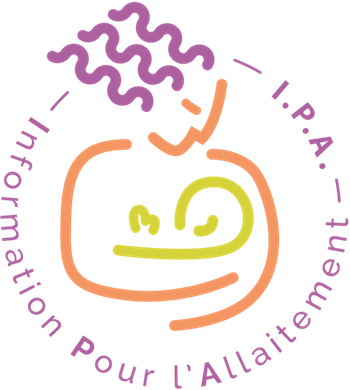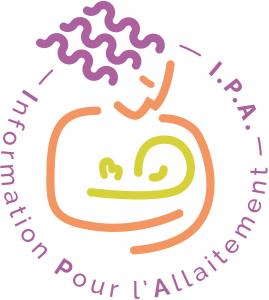Catégories
 > Physiologie > Physiologie de l'appareil reproducteur et urinaire > Reproduction > Grossesse > Naissance > Période prénatale > Physiologie > Physiologie de l'appareil reproducteur et urinaire > Reproduction > Grossesse > Naissance > Période prénatale
Période prénatale |
Documents disponibles dans cette catégorie (37)
 Ajouter le résultat dans votre panier Faire une suggestion Affiner la recherche
Ajouter le résultat dans votre panier Faire une suggestion Affiner la rechercheBulletin : texte imprimé
Breastfeeding Medicine, Vol. 13, n° 6 - Juillet - Août 2018
2018Article : texte imprimé
Academy of Breastfeeding Medicine, Auteur ; Sarah Reece-Stremtan, Auteur ; Matilde Campos, Auteur ; Lauren Kokajko, Auteur |Article : texte imprimé
Stephen Stopenski, Auteur ; Anum Aslam, Auteur ; Xinmin Zhang, Auteur |Objective: To report breastfeeding complaints of women diagnosed with cancer during pregnancy and correlate success with characteristics of their treatment. Materials and Methods: This is a prospective cohort study of women diagnosed with can[...]Article : texte imprimé
Ruth Newby, Auteur ; Wendy Brodribb, Auteur ; Robert S. Ware, Auteur |This report describes information sources accessed by pregnant women around antenatal and early infant diet. Australian women in their first pregnancy (n=277) responded to questionnaires online and on paper between June 2010 and March 2011 as pa[...]Article : texte imprimé
Jordyn T. Wallenborn, Auteur ; Susan Cha, Auteur ; Saba W. Masho, Auteur |Background: Intimate partner violence is a major public health problem that disproportionately affects women. Current literature investigating the relationship between intimate partner violence and breastfeeding is inconsistent. Research aim[...]Article : texte imprimé
Vickie M. Dugat, Auteur ; lana R. Azulay Chertok, Auteur ; Zelalem T. Haile, Auteur |Background: Despite the known benefits of breastfeeding, many women in the United States do not exclusively breastfeed for the recommended 6 months due to various factors. Limited studies have examined the association between prenatal stressful [...]Article : texte imprimé
Natasha A. Johnson, Auteur ; Elena Fuell Wysong, Auteur ; Krystel Tossone, Auteur |Purpose: We sought to understand how women's prenatal infant feeding and contraception intentions were related to postpartum choices. Materials and Methods: Expectant women ≥14 years of age receiving care at MacDonald Women's Hospital, [...]Article : texte imprimé
Geneviève Ritchie Ewing, Auteur ; Amanda M. Mitchell, Auteur ; Lisa M. Christian, Auteur |Background: Breastfeeding plays an important role in both maternal and infant health and well-being. While researchers have examined the relationship between postpartum psychological distress and breastfeeding behaviors, few have investigated l[...]texte imprimé
Each new print copy includes Navigate 2 Preferred Access that unlocks a comprehensive and interactive eBook and Navigate 2 TestPrep. Breastfeeding and Human Lactation, Enhanced Fifth Edition continues as the leading reference for the latest clin[...]Article : texte imprimé
Nicole Yonke, Auteur ; Rebekah Maston, Auteur |Background: Women taking methadone or buprenorphine are encouraged to breastfeed if stable without polysubstance use. Research Aim: We aimed to determine the difference between stated intention to breastfeed prenatally in women taking metha[...]Article : texte imprimé
Tengteng Li, Auteur ; Nafei Guo, Auteur ; Hui Jiang, Auteur ; Maher Eldadah, Auteur |Background: Breastfeeding self-efficacy has been shown to be a strong predictor of breastfeeding initiation and duration; however, factors associated with breastfeeding self-efficacy in China are unclear. Research aims: The aims were (a) to[...]Article : texte imprimé
Ganga L. Srinivas, Auteur ; Mary Benson, Auteur ; Sarah Worley, Auteur |Background: Whereas breastfeeding initiation rates have risen in all groups throughout the country, rates of breastfeeding duration have changed more slowly. Peer counseling has had some success in sustaining breastfeeding, but with intensive p[...]Article : texte imprimé
Kelly K. Gurka, Auteur ; Paige P. Hornsby, Auteur ; Emily Drake, Auteur |Background: Low-income women have the lowest rates of breastfeeding in the United States. Greater understanding of factors that predict intention to feed artificial breastmilk substitute is needed to inform the design and timing of interventions[...]Article : texte imprimé
Factors That Modify the Association of Maternal Postpartum Smoking and Exclusive Breastfeeding Rates
Rika Tanda, Auteur ; Ilana R.A. Chertok, Auteur ; Zelalem T. Haile, Auteur |Background and Objective: Maternal postpartum smoking increases the risk for poor infant health outcomes, while exclusive breastfeeding has been shown to support infant health. Limited population-based research has been published on the interact[...]Article : texte imprimé
Ka Lun Wong, Auteur ; Marie Tarrant, Auteur ; Kris Y.W Lok, Auteur |Although breastfeeding initiation rates have increased substantially in many developed countries over the past several decades, breastfeeding duration and exclusivity remain suboptimal. In the antenatal period, both group and individual educatio[...]texte imprimé
mpact of Birthing Practices on Breastfeeding, Second Edition examines the research and evidence connecting birth practices to breastfeeding outcomes. It takes an in-depth look at the post-birth experiences of the mother and baby, using the baby[...]Article : texte imprimé
Adetola Louis-Jacques, Auteur ; Ronée Wilson, Auteur ; Kathryn Dean, Auteur ; Ivonne Hernandez, Auteur ; Diane L. Spatz, Auteur ; Sarah Obican, Auteur |Objectives: To improve maternal knowledge on medication and substance usage during lactation through prenatal breastfeeding education and assess breastfeeding rates at 2–4 and 6–8 weeks postpartum. Study Design: This quality improvement initi[...]Article : texte imprimé
Adrienne Pitts, Auteur ; Mary Ann Faucher, Auteur ; Rebecca Spencer, Auteur |Introduction: Prenatal breastfeeding education increases breastfeeding initiation, exclusivity, and duration. Current research regarding antenatal breastfeeding education suggests that recurrent, individual, and technology-based education progra[...]Article : texte imprimé
Influence of Partner Support on an Employed Mother's Intention to Breastfeed After Returning to Work
Su-Ying Tsai, Auteur |Background: Despite the increasing number of large companies complying with the demands for a breastfeeding-friendly workplace, providing on-site lactation support, some mothers still find continuing to breastfeed a challenge. We postulated that[...]Article : texte imprimé
Elisabeth B. Froh, Auteur ; Jessica Schwarz, Auteur ; Diane L. Spatz, Auteur |Introduction: MamaCare is an adaptation of the CenteringPregnancy group prenatal care model designed to support women when the pregnancy has been complicated by the presence of known congenital anomalies. The lactation-related outcomes of partic[...]Article : texte imprimé
Helen Weinel, Auteur ; Lynette Cusack, Auteur |Key Messages The incidence of gestational diabetes mellitus is increasing worldwide. The introduction of antenatal human milk expression by women with pre-existing Type 1, Type 2, or gestational diabetes is an important maternity service ini[...]Article : texte imprimé
Narendra R. Dereddy, Auteur ; Ajay J. Talati, Auteur ; Ashley Smith, Auteur |Breast milk feeding has advantages over formula feeding in premature infants, but its use in them is low. We initiated measures in our inner-city hospital such as starting a dedicated lactation service, counseling the mothers prenatally and post[...]Article : texte imprimé
Peng Zhu, Auteur ; Jiahu Hao, Auteur ; Xiaomin Jiang, Auteur |Background: Many perinatal stressors, including high prepregnancy body mass index, preterm birth, and cesarean section, increase the risk for short breastfeeding duration. Few studies, however, have investigated the mechanism in the relationship[...]



























